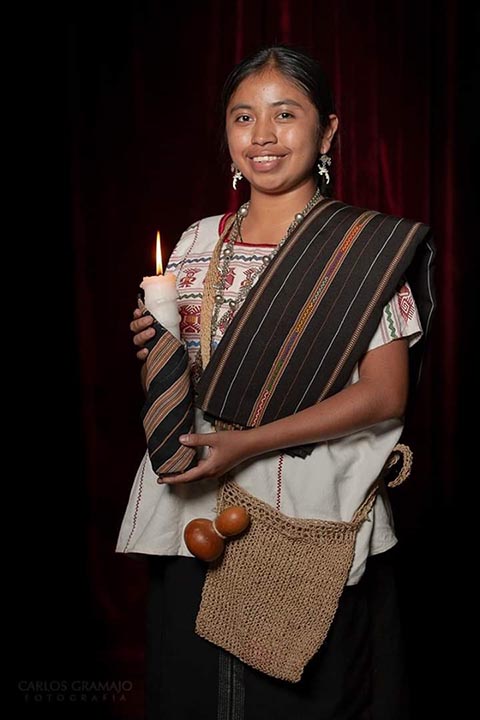
San Juan La Laguna
¡¡¡Land of the Tz'utujiles!!!

San Juan La Laguna
¡¡¡Land of the Tz'utujiles!!!
Written by: Lisbeth Sucely Hernández
The güipil is woven in a waist loom, of white color that leaves the neck until it reaches below the waist, in the güipil there are three figures: pairs of double-headed eagles stand out called in Tz'utujil “Ajk'ulaawi” who are on their backs, represent freedom and slavery, a symbol of the Spaniards when they came to invade and strip the Tz'utujil lands but for the spiritual guides it means the present and past. The dolls represent the value of the woman with a crown. There are a couple of monkeys, extracted from the Popol Wuj that symbolizes the punishment that the Gods imposed on the twins Jun B’atz’ and Jun Chowen for their disobedience, for the spiritual guides represents the origin of man. The lines represent the snake that is related to the Goddess Ixchel (Goddess of the weavers) and the colors of the thread that is embroidered the güipil represent the 4 cardinal points.
To form the güipil it is necessary to knit two garments or two sections on a loom of the waist or stick loom without ornaments, then it is joined by hand sewing forming the blouse two rods long. The colors it carries mean red corn, with human blood, it is related to the calendar, the counting of time, with the death of the Prophet St. John the Baptist when his head was cut off, by the blood shed. The colors on the neck are related to the rainbow, in the chest there are 24 squares of different colors, they are counted from June 1 to June 24, the day on which the birth of the employer of the town “San Juan Bautista ”from San Juan La Laguna
The girdle is red, with black and white striped stripes that relate to red corn, human blood, dark night and peace.
The dress is black with a striped and horizontal white decorated by hand, it has stripes that are white, the dark background is related to the dark, the night, with the black corn and the rest of each night, darkness and white daylight, with white corn and freedom.
It is made in a waist loom by women, the two garments are joined with different colors of yarn, the bottom is black with dark tan stripes and white stripes. This garment is directly related to the culture of the people.
The ribbon is to make two braids to the woman's hair, it is red that symbolizes the color of the blood.
Since the time of the grandparents, only women wore earrings, they are of different sizes and figures, they relate to humanity, the life of animals and the plants of the field.
The necklaces that are used are called red corals, that name was given by the characteristics and the color of the coral snake is also used the silver or chachal necklace called in Tz'utujil “Saqa Puaq”
At the beginning the women did not use caites only the men because they were the ones who were going to work but later it was changed and the women started using caites, the material is made of leather and of different styles.

It symbolizes the light and is used by the ladies in processions and changes of brotherhood, wrapped in the perraje (Su’t).
It is used to store / carry small things or objects, made of magüey.
It's where they keep the water to drink later.